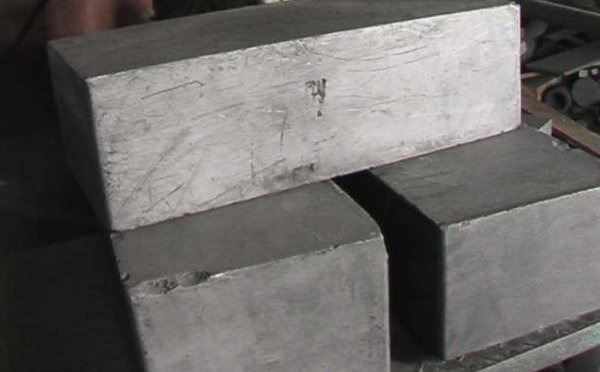

Graphite lubricant overview
Graphite has a flaky crystal structure with good lubricating properties. It also has good electrical conductivity, thermal conductivity, wear resistance, pressure resistance, temperature resistance (temperature up to 450 ℃), and chemical stability, so graphite is widely used in the machinery industry to make various lubricants.
The carbon atoms are held together firmly in the flakes. Since the bond between the thin plates is weak, graphite exhibits lower shear strength under frictional force. Therefore, it can be used as a solid lubricant and has become one of the traditional and main solid lubricating materials.
Used as a lubricant, it is mainly to uniformly distribute graphite fine particles in water, oil, or other media to form a stable colloidal substance. It can be directly applied to the parts that need lubrication by means of spin coating, dipping or spraying, etc. It can be added to various lubricants and used together. In contact with the metal surface, it can not only form a firm lubricating film but also improve the wetting performance of the metal surface to other lubricants, thereby maintaining long-term lubrication. In addition, because graphite exists as extremely fine particles, it can easily penetrate into closely fitting sliding or rotating parts to provide good lubrication.
Graphite has a hexagonal crystal structure. Because the bonding force between the surfaces parallel to the foundation surface is weak, these crystals are easy to shear between the surfaces, that is, the friction force is small, and at the same time, it can support the load perpendicular to the foundation surface, so the bearing capacity is strong, and the friction coefficient is small. It has the best properties as a solid lubricant.
The friction and wear of graphite are ominated by adsorbed gas. The wear rate of graphite decreases with the increase of water vapor pressure. When the pressure increases to more than 466Pa, the wear characteristics of graphite depend on gas adsorption. The reason is that the surface energy of the graphite edge (side surface) is higher than that of the base. The surface is 100 times higher, so the edge surface is easier to adhere to the bottom metal surface than the base surface in a vacuum. Even if the tangential force increases, shear will not occur between the foundation surfaces that are easy to slip. This leads to an increase in the coefficient of friction and increased wear. The friction coefficient of graphite in a vacuum is twice that in air, and the wear is even as high as 100 times.
If there is gas, the edge surface first adsorbs the gas and reaches saturation, then its adhesion to the metal surface occurs on the base surface, and under the action of shearing force, the slip between the base surfaces becomes easy.
The higher the crystallinity of graphite, the more it can protect the lubricated material from wear. In addition, the content of impurities must be controlled below 1%, otherwise significant abrasive wear will easily occur. However, this effect is actually different depending on the type of impurity.
Taking advantage of graphite's ability to easily adsorb gases, fluorine, metals or metal compounds can be introduced between the layers to form interlayer compounds, or to form a honeycomb structure through electrolytic oxidation and reduction. The following figure shows the relationship between metals and metal chlorides on the life of the graphite intercalation compound coating film. As a substance introduced into the interlayer, metal chloride has a better effect than metal, and the more the amount of inclusion, the more obvious the effect. It can be seen that cobalt chloride (CoCl2) is the most effective way to improve the density-resistant life, which can extend the life to more than 5 times that of the original graphite. Such new materials can maintain good lubricating properties even under changing sliding conditions.
As a solid lubricant, graphite can be used for splash lubrication in the form of dry powder. It can be used as an additive to make water and oil. It can also be combined with other materials to form a composite material for lubrication in transmission. It can be used under conducive conditions. Wear-resistant parts (brushes).
Application of graphite lubricant
Used as a lubricant, mainly to distribute fine graphite particles evenly in water, oil, or other media to form a stable colloid. It can be directly applied to parts that need lubrication by spin coating, dip coating or spraying. Can be added to various lubricants and used together. Contact with the metal surface can not only form a strong lubricating film but also improve the wettability of the metal surface to other lubricants, thereby maintaining long-term lubrication. In addition, because graphite exists in the form of extremely fine particles, it is easy to penetrate into tightly fitting sliding or rotating parts, thereby providing good lubrication.
Graphite lubrican can be divided into three types: water agent, oil wattle colloidal graphite, and fine particle graphite powder. The method of use is as follows:
Micro-grained graphite powder
Apply directly to the rotating or sliding part, or mix it into the medium, such as kerosene, gasoline or light mineral oil, phenolic resin or water glass, spray or dip coating on the part that needs to be lubricated or covered, and the amount used is according to It depends on needs, generally 10%~20%.
The graphite powder is put into the gearbox. Due to the stirring action of the gear, the powder will fly up and enter various friction parts to form dust-type lubrication. Dust-type lubrication has been applied in the gearbox and rear axle differential gearbox of automobile chassis and has achieved certain results.
Dust-type lubrication spinning is relatively simple, as long as the solid lubricant powder is poured into the transmission box. During use, the solid oil agent can be continuously and automatically replenished
It can be directly added to the lubricating oil used in the original lubrication system and used together so that the amount of dumping depends on the need, generally about 2-10%.
When graphite is dispersed and used in lubricating oil, its lubricating performance not only depends on the lubricating properties of graphite but also is affected by the performance of lubricating oil. Tests have proved that the lubricating film composed of stone tools has the best lubricating performance if it contains 7 to 8 times the amount of lubricating oil of stone tools. The particle size of graphite dispersed in lubricating oil should be considered comprehensively according to the requirements of use. Generally, 4~10μm particles are used, because 4~5μm abrasive particles have the least amount of wear, while those below 1μm and above 150μm have the largest amount of wear.
Lubricating film. And it can run for a long time without manual film preservation, and the maintenance is relatively simple.

Liquid
The graphite powder is directly added to water or emulsified cutting fluid for use. The usage amount depends on the need, generally about 5-10%.
A suspension of graphite dispersed in water, oil, or solvent, commonly used in lubricating release agents for metal thermoplastic pressure processing. As a thickening agent for grease, graphite can increase load-bearing capacity, wear resistance, and heat resistance, and has good high-temperature adhesion. Graphite milk made of graphite with an average particle size of 10μm is used in hot forging and can be used for forging at temperatures above 500°C and 800°C in a short time.
For example, in the drawing process of tungsten wire, graphite milk is indispensable. The performance of graphite emulsion directly affects the quality of tungsten wire (the consistency of wire diameter and surface defects, etc.) and the wear of the diamond die hole. Before drawing, graphite milk is coated on the surface of the drawn tungsten wire in advance, and then passes through a heating furnace (furnace temperature is between 500 and 850°C) at a speed of 30-70 μm/min, and then passes through the diamond die hole to complete the drawing process.
The price of graphite lubricant
The price of graphite lubricants will vary randomly with the production cost, transportation cost, international situation, and the supply and demand situation of the graphite lubricant market. Tanki New Materials Co.,Ltd helps all industries and chemical wholesalers find high-quality, low-cost nanomaterials and chemicals by providing a full set of customized services. If you are looking for graphite lubricant, please feel free to send an inquiry to get the latest price of graphite lubricant
Supplier of graphite lubricants
As a global graphite lubricant supplier, Tanki New Materials Co.,Ltd has extensive experience in the performance, application, and cost-effective manufacturing of advanced and engineered materials. The company has successfully developed a series of powder materials (the best oil additives for nano-diamond, lithium stearate, nano-copper, and nano-oil additives), high-purity targets, functional ceramics, and structural devices, and provides OEM services.
Tanki New Materials Co.Ltd Aims to help All industries and Chemical Wholesalers to find high quality, cheap price nano materials and chemicals by providing turn-key customize manufacturing services.
As a trust-worthy
global nano-materials and chemicals manufacturer, Tanki New Materials Co.Ltd has been successfully supplying big and small brands with customized nano materials and chemical products in bulk or small quantities.
Tanki New
Materials Co.Ltd has rich experiences in the properties, applications, and cost-effective manufacturing of advanced and engineered materials. The company has successfully developed a series of powder materials (including oxides, carbides,
nitrides, single metal, etc.), high-purity targets, functional ceramics, and structural devices. OEM service is available.
Our innovative, high-performance materials are widely used in many industries, including but not limited
to the automotive, electrical, electronics, information technology, petrochemical, oil, ceramics, paint, metallurgy, solar energy, and catalysis.
Based in the center of China, the company has rich resources and chemical product
manufacuturing chains to make sure your cost remain as low as your specifications demand.
The company provides following products such as providing super high quality chemicals and Nano materials such as graphite powder,
boron powder , zinc sulfide , nitride powder, Calcium nitride, Ca3N2, 3D printing powder, and so on.

Ask a quote for the latest price and one of our team members will respond as soon as possible. Fields marked with * are required.
